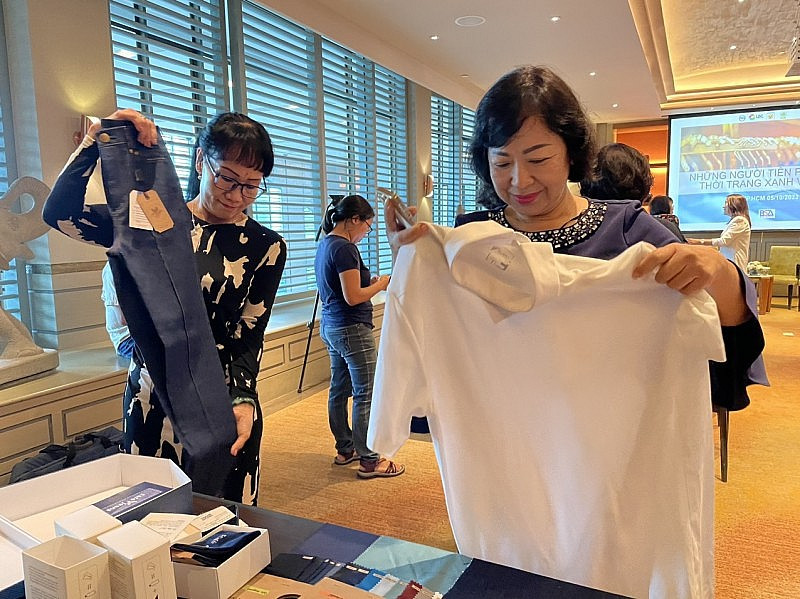Vietnam’s textile and garment products for export are set to meet ecological standards under the requirements of free trade agreements.
Green and sustainable fashion is a global trend that Vietnamese companies are adapting to win customers, said Vu Duc Giang, chairman of the Vietnam Textile and Apparel Association (VITAS).
As consumers have become more concerned about environmental and health issues, especially after the Covid-19 pandemic, there are many fashion brands that have switched to producing and using green and sustainable materials in their products, the Cong Thuong Newspaper quoted Giang.
He shared the idea that Vietnam is participating in many new-generation free trade agreements (FTAs). “Under these FTAs, our textile and garment products will have to meet stricter standards, including ecological standards set by importers,” Giang said. Vietnam’s leading enterprises have had to accept the rules of the game set by importers to maintain and retain market share.
Vu Kim Hanh, Chairwoman of the Business Association of High-Quality Vietnamese Products, said that green fashion has been integrated into a chain of sustainable economy, from production and design to distribution and consumption.
 |
| Green fashion is made from lotus and mint fabrics by Vietnamese companies. Photo: Congthuong |
“However, green fashion in Vietnam is still in its infancy. We live in the fast fashion mainstream, but in Europe, green and sustainable fashion is a trend and the main way forward. I believe we need to promote green and sustainable content in Vietnam,” Hanh said.
Garments made from green and sustainable materials help protect the environment and prevent waste. However, pioneers in this activity must have confidence and persistent investment, Hanh stressed.
Catching up to bring Vietnamese green fashion to the world
VITAS statistics show that besides large enterprises such as Viet Tien Garment, Garment 10, Bao Minh Garment, Dong Tien, and Thanh Cong, there are also many medium-sized enterprises such as Faslink, Tsafari, Trung Quy, VitaJean that are following the green fashion trend and have achieved some initial success.
Thanks to the timely “greening”, these businesses have secured stable orders in the context of reduced market demand in the first months of this year.
In mid-September, Faslink and Tsafari launched green fashion products with unique designs during London Fashion Week 2023, attracting much attention. Faslink collaborated with Tsafari to present collections using materials made from lotus fiber. This type of fiber is appreciated for its comfort and coolness, especially as it contains collagen to moisturize the skin and create a pleasant feeling.
“We have taken seriously the comments from analysts and industry experts around the world about our products, so we know whether we are suitable to go out into the world,” said designer Ho Tran Da Thao, owner of Tsafari, who is designing the company’s collections at London Fashion Week 2023.
The creativity of Vietnamese fashion designers in recent years is one reason why many international celebrities have been interested in their creations.
One of the most important events showcasing Vietnamese fashion on the global stage is Vietnam International Fashion Week (VIFW), considered the top international fashion event in Southeast Asia and the fourth in Asia.
Trang Le, chairwoman of VIFW, said the event is held twice a year and attracts about 20 Vietnamese and international fashion designers and brands to showcase their new collections.
“VIFW is expected to pave the way for Vietnamese fashion to take regional and international stages,” Trang Le stressed.
Source : Vietnam Net






















